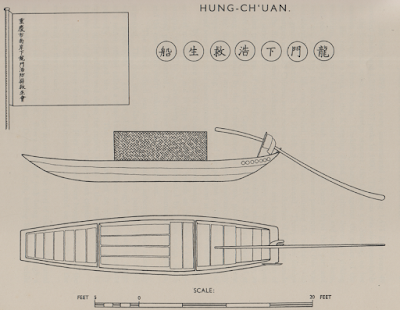 |
| A river lifeboat, from Junks and Sampans of the Upper Yangtze (1940), by G.R.G. Worcester (Plate 9). |
Junks and Sampans of the Upper Yangtze by G.R.G. Worcester (1940, published by the Inspector General of Customs of China) is now available for free download. It joins Worcester's other works on the traditional vessels of the Yangtze (Junks and Sampans of the Yangtze: Volume 1: Introduction: and Craft of the Estuary and Shanghai Area; and Volume 2:The Craft of the Lower and Middle Yangtze and Tributaries, on our page of downloads, where you'll find other books on Asian watercraft. The newest document was made available by an enthusiast who chooses to remain anonymous but to whom we are most grateful.
Like Volumes 1 and 2, the "Upper Yangtze" volume is a comprehensive survey of the traditional watercraft in the area under study, covering boat types, construction details, and fascinating descriptions of each boat type's design, history, and use. Worcester was an Englishman employed as a river inspector for China's Maritime Customs Service.
The Hung Ch'uan boat shown at the top, was a life boat. Dozens of these "red boats" (known as such for their characteristic color) were stationed along treacherous stretches of river, where they came to the aid of vessels in distress and saved hundreds of lives annually. The one shown measured 30' LOA by 7' beam. The characters on the flag identify its operator as "The Society for Rescuing Drowning People, Lower Section, Lungmenhao, South Bank, Chungking".
| Tracking tackle and rigging, from Junks and Sampans of the Upper Yangtze (1940), by G.R.G. Worcester (Plate 4). |










No comments:
Post a Comment